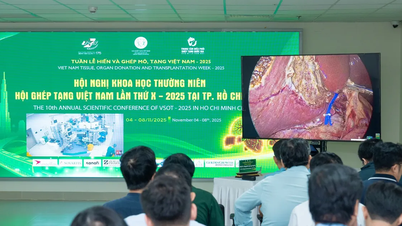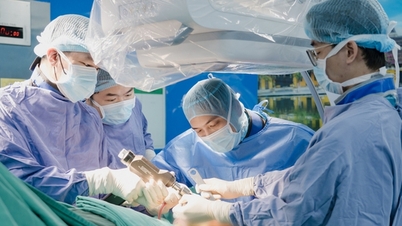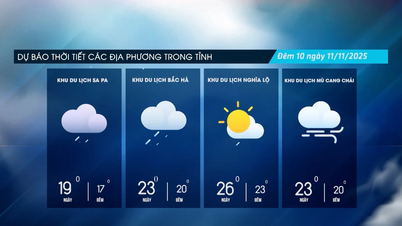Brisk walking helps restore and strengthen the health of the following parts:
Heart and vascular system
When you walk fast, your heart has to pump more blood and your blood vessels work harder to transport oxygen and nutrients to every cell. Therefore, walking fast every day helps improve cardiovascular health, lower blood pressure, improve circulation and increase the flexibility of blood vessels, according to the health website Medical News Today (UK).

For sedentary people, brisk walking can restore skeletal strength and muscle flexibility.
PHOTO: AI
Brisk walking also activates the sympathetic nervous system, increasing endothelial enzyme activity to produce nitric oxide, a natural vasodilator.
As a result, blood vessels become more flexible and vascular resistance decreases. In other words, the heart and blood vessels work more easily and are healthier, while significantly reducing the risk of heart disease, stroke, atherosclerosis and high blood pressure. Brisk walking should be at least 30 minutes a day.
Brisk walking is good for bones, joints and muscles.
For people who are sedentary, brisk walking helps restore bone strength and muscle flexibility. When you walk briskly, each step puts pressure on the bones of the legs, hips and spine, thereby stimulating bone-forming cells to work.
This effect is especially evident in the legs and spine, thereby increasing bone density and reducing the risk of osteoporosis. At the same time, the muscles in the legs, buttocks and upper body are also strengthened.
In addition, regular brisk walking also helps lubricate joints and pump synovial fluid better. Many research evidences show that brisk walking 30-40 minutes/day, 5-7 days/week is enough to make bones and muscles flexible and reduce joint pain.
Digestive system and waistline
When you walk briskly on an empty stomach or after a meal, your digestive system is slightly activated, increasing blood flow to your intestines, helping you digest and metabolize food more efficiently. At the same time, physical activity also improves insulin sensitivity and reduces belly fat accumulation. In addition, walking increases energy metabolism and creates a calorie deficit.
To activate the digestive mechanism and metabolize fat better, everyone should try walking briskly for about 10-15 minutes after the main meal. During the day, if conditions permit, you can walk 30 minutes before or after work.
Brain and mood
Brisk walking also stimulates the growth of nerve cells and blood vessels in the brain. Many research studies show that walking slows memory loss and improves the function of the hippocampus in the brain.
People can choose to walk briskly every morning for 20-30 minutes to start the day. If you want to relieve stress, you can go after work or in the evening, according to Medical News Today .
Source: https://thanhnien.vn/di-bo-nhanh-giup-tre-hoa-co-quan-nao-cua-ban-185251109134852079.htm



































































































![Dong Nai OCOP transition: [Article 3] Linking tourism with OCOP product consumption](https://vphoto.vietnam.vn/thumb/402x226/vietnam/resource/IMAGE/2025/11/10/1762739199309_1324-2740-7_n-162543_981.jpeg)













Comment (0)